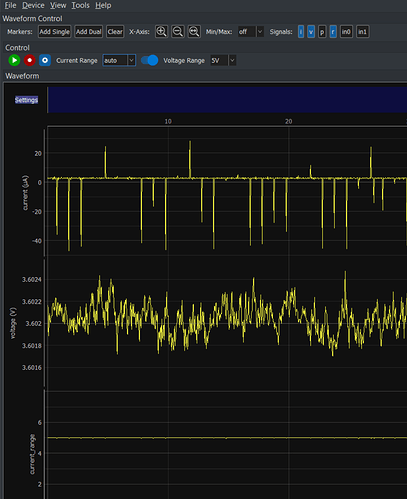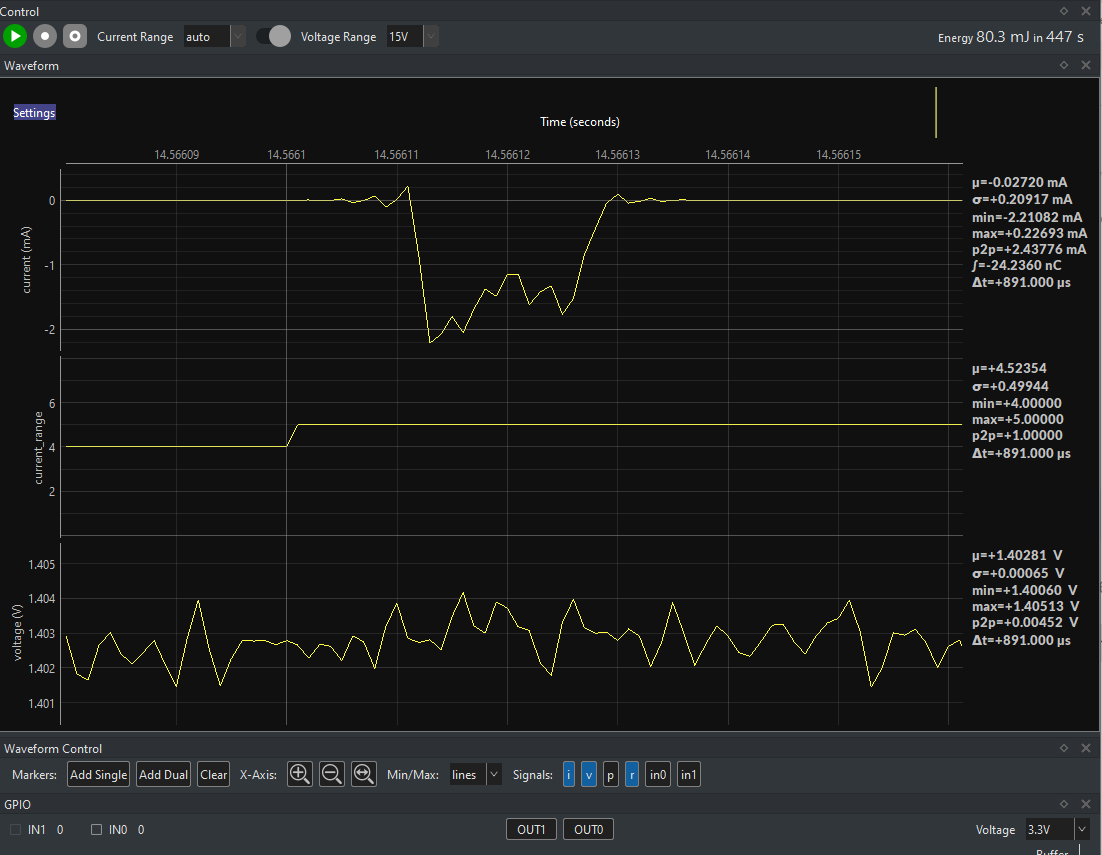I see that you turned off min/max. If you are concerned about min/max values, you should keep that on. The yellow line is the mean (average) value.
Your Joulescope collects samples 2 million times per second. When you are zoomed out in the UI, your screen cannot display that many individual points. Instead, each x-axis pixel on your screen may represent many, many samples. Each pixel on the yellow line is the mean of all samples for that pixel. The min line is the minimum value computed over each sample represented by that pixel, and the max line is the maximum value computed over each sample represented by that pixel. So, as you zoom in and out, the yellow line will change shape because each pixel represents different samples.
From another perspective, computing mean is a low-pass filter. As you zoom in, you increase the low-pass cut-off frequency. As you zoom out, you are decreasing the low-pass cut-off frequency. So, you are viewing the same signal at different bandwidths, which can change it’s shape.
When you are fully zoomed in, you see the actual samples, not the mean, so the shape will no longer change.
So, what’s up with the “spiky” events near current range switches? You have a circuit with a power supply, wires, Joulescope, and your target board. Joulescope is effectively a variable resistor. Your target board is a capacitor (bypass capacitance) in parallel with a variable resistor. Your wires are resistive and inductive, but you can often neglect these effects.
The current flowing through Joulescope creates a slight voltage drop, called burden voltage. According to Ohm’s law, voltage = current * resistance. Your Joulescope does a great job keeping this voltage very small, typically less than 20 mV. However, it’s not zero. When resistance changes, so does that voltage drop. However, the capacitance on the target resists that change. When the shunt resistor changes, the target capacitance needs to charge up or discharge to match the new burden voltage, and you can get large positive and negative spikes. This is real current! If you measure the RC time constant, you already know R (Joulescope shunt resistance), so you can compute your target capacitance. Since this is real current, it does not affect the accuracy of your measurement, but it is not entirely intuitive either.
For more detail, see this post.









